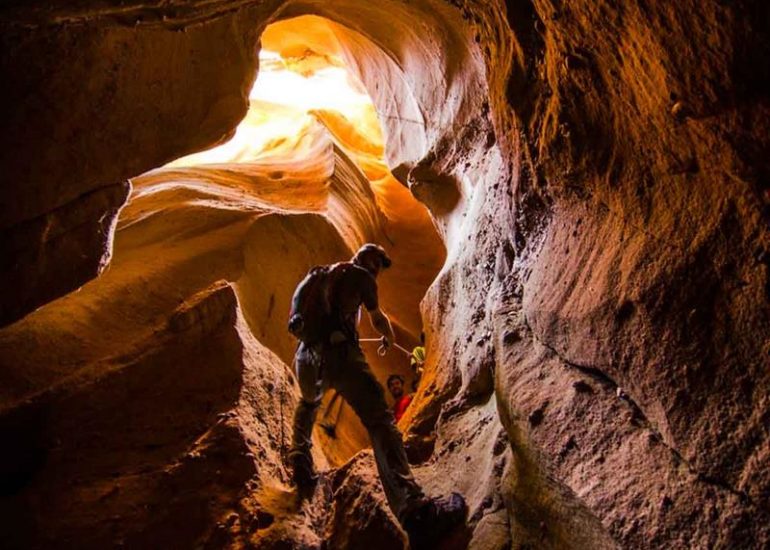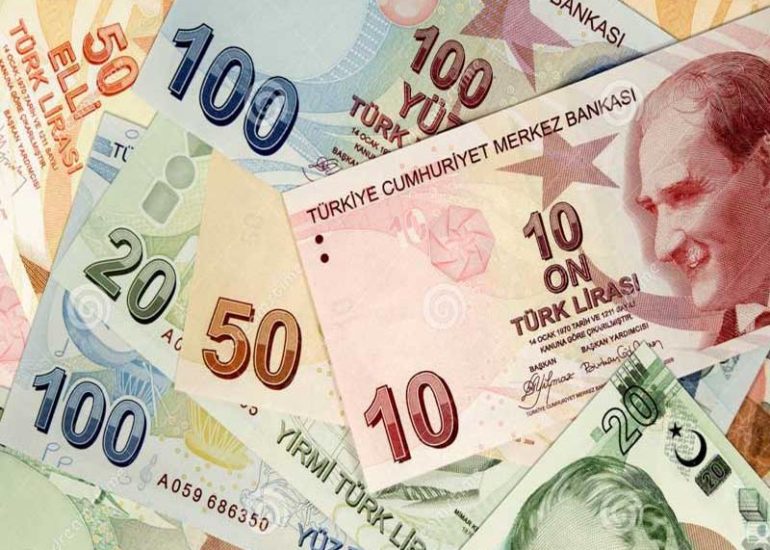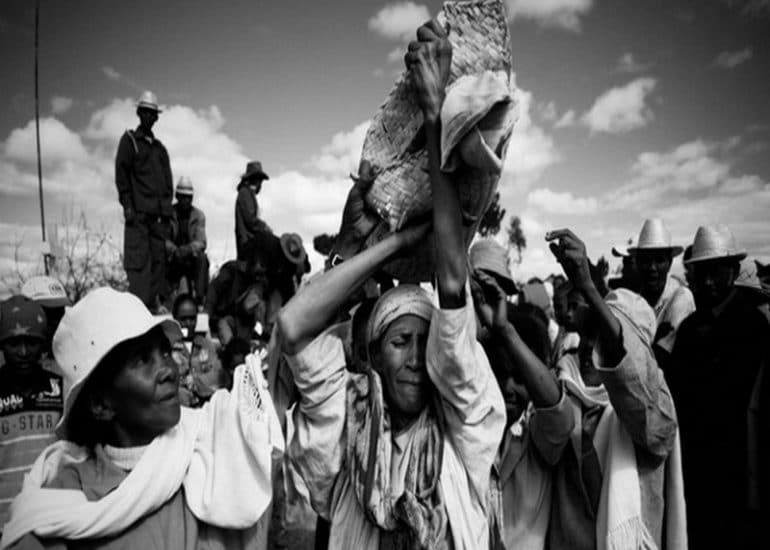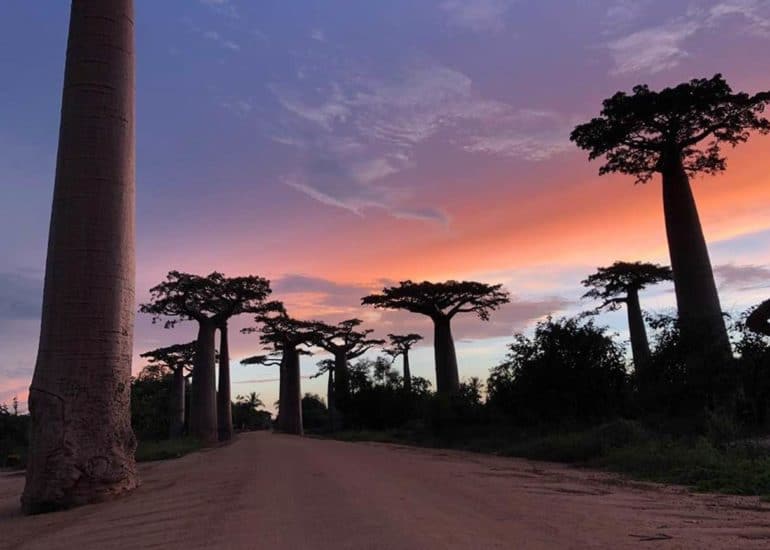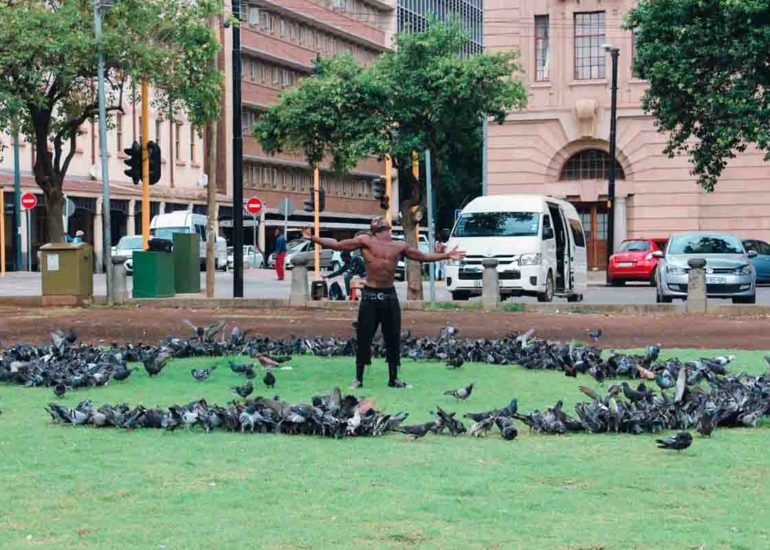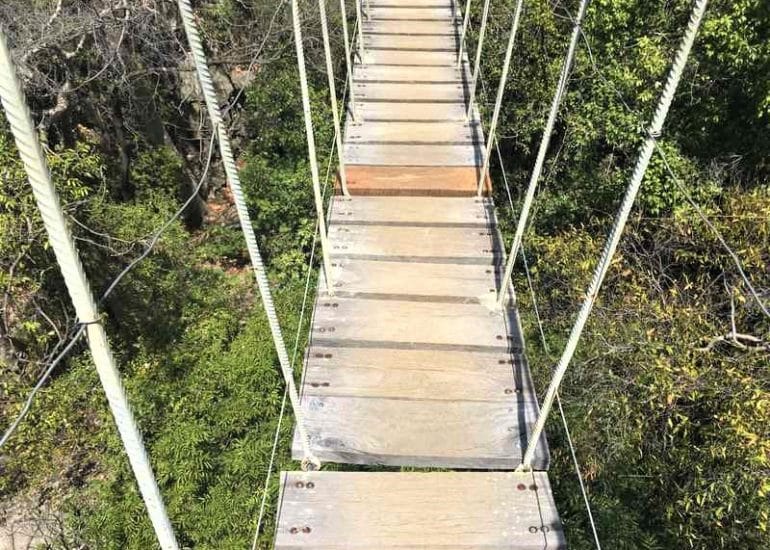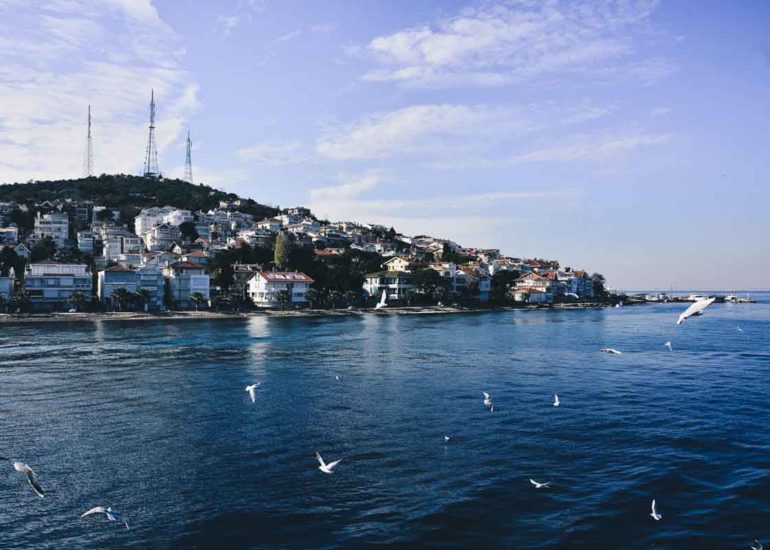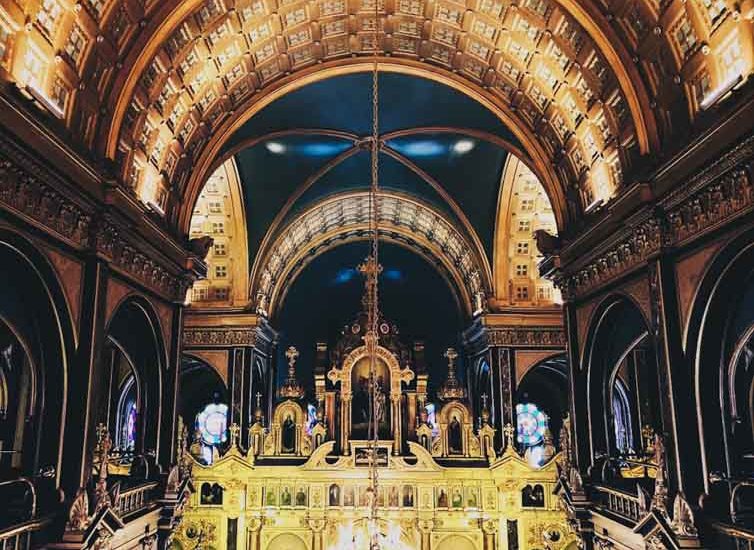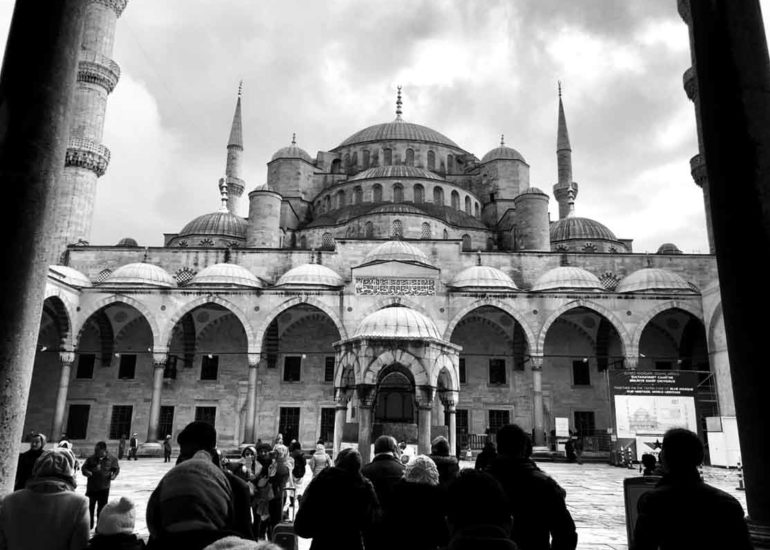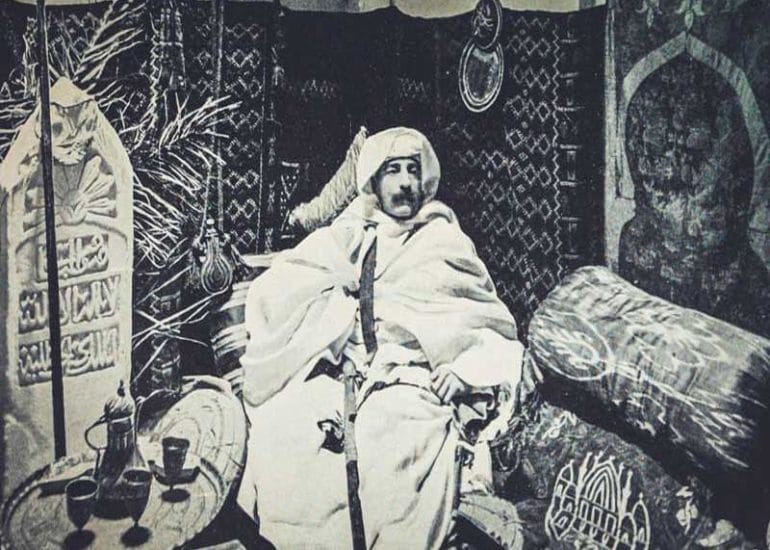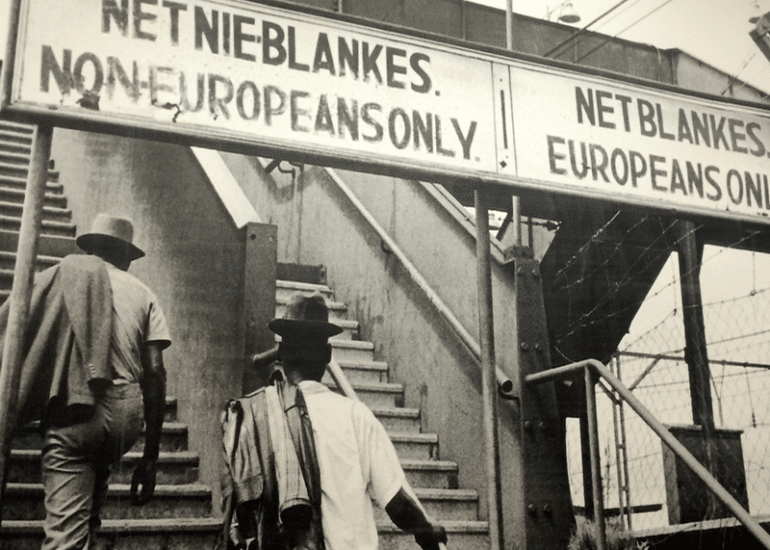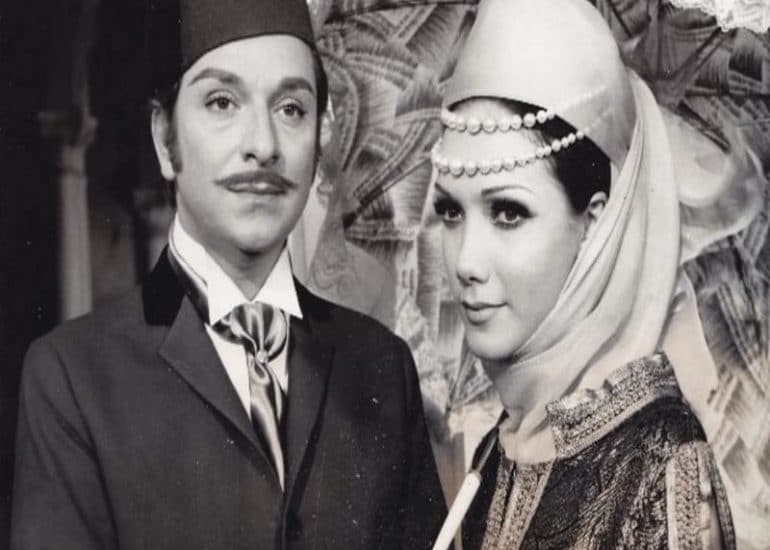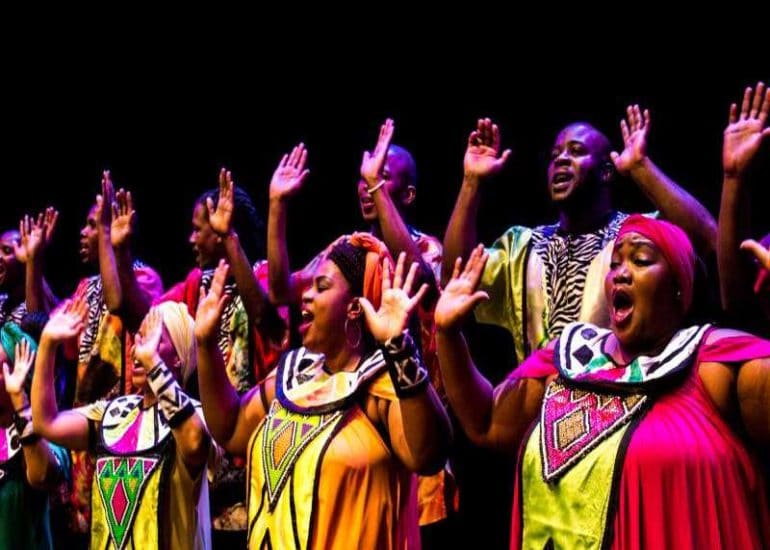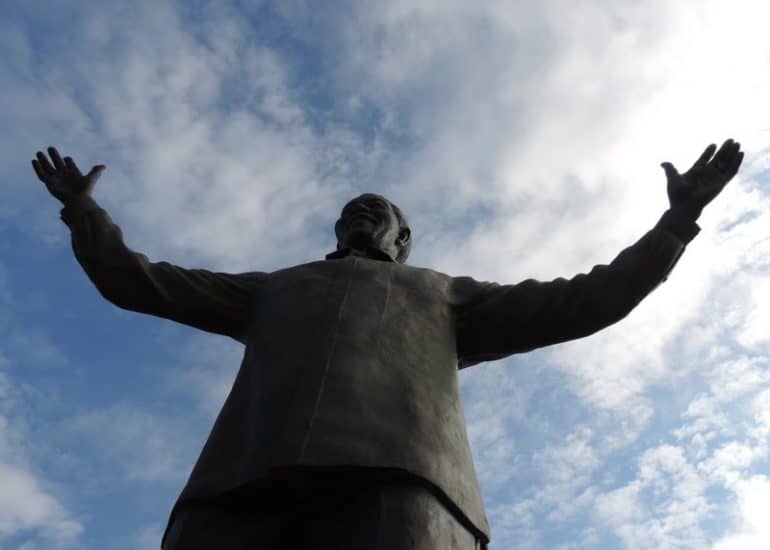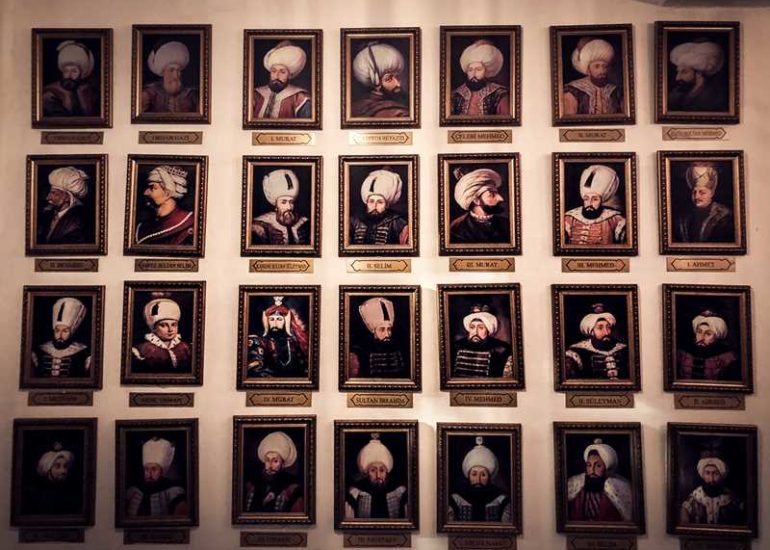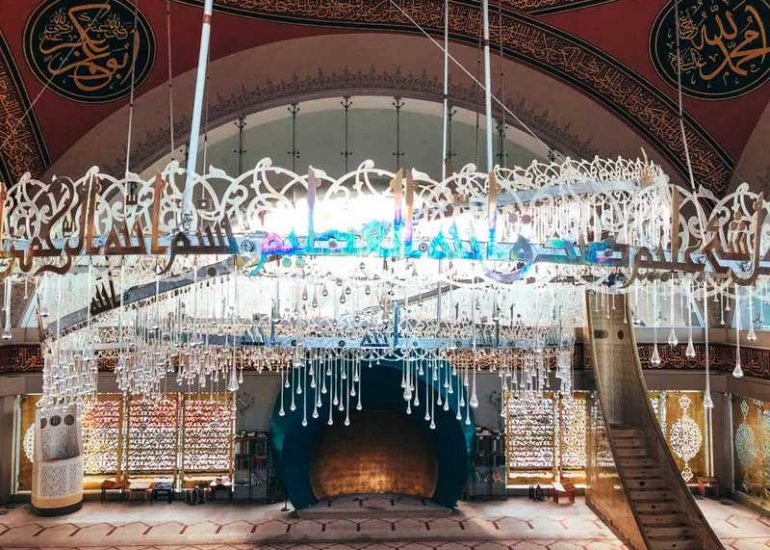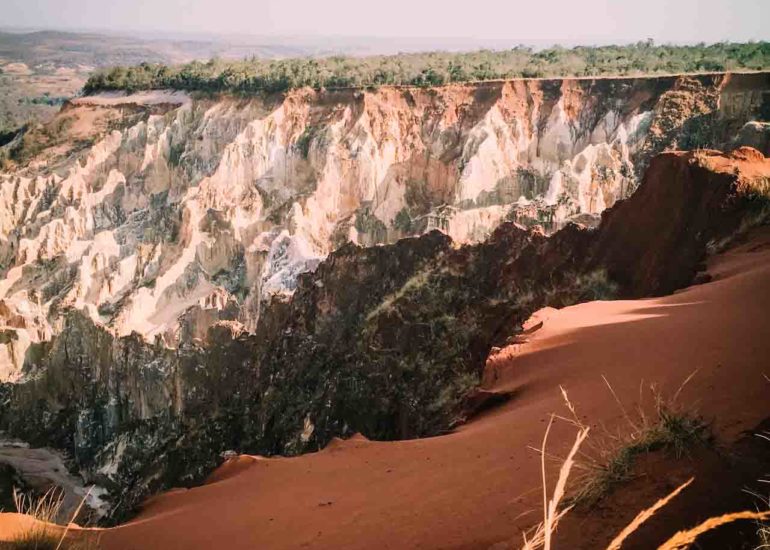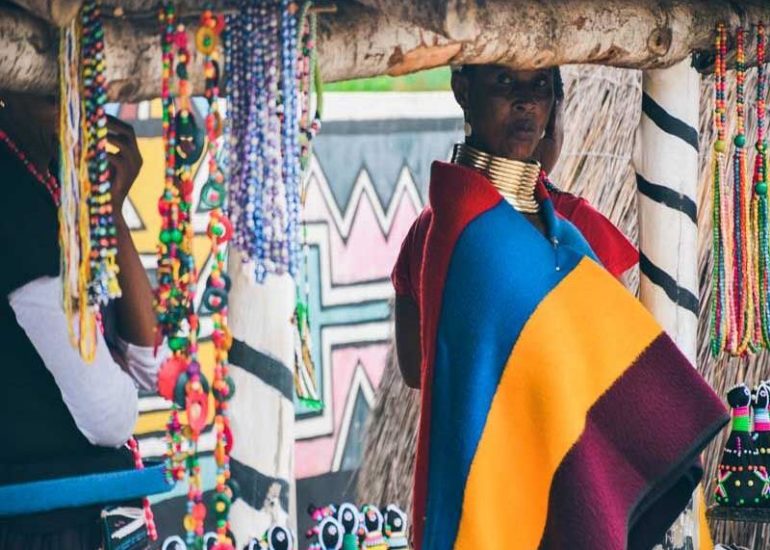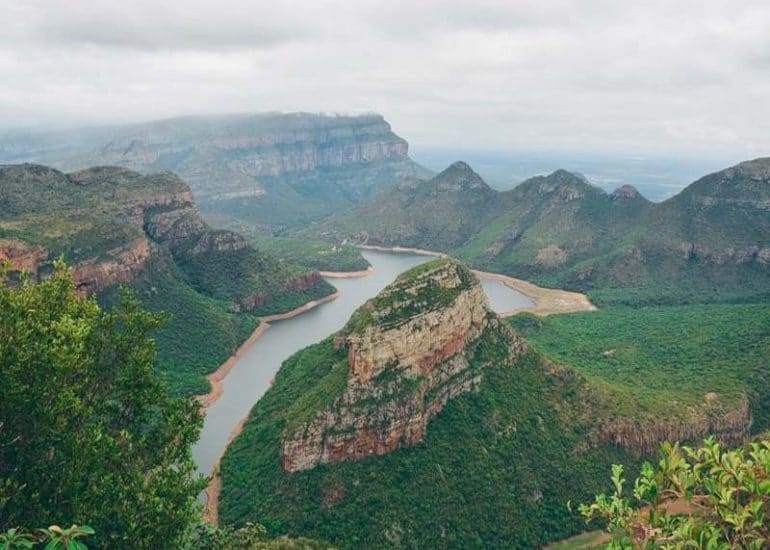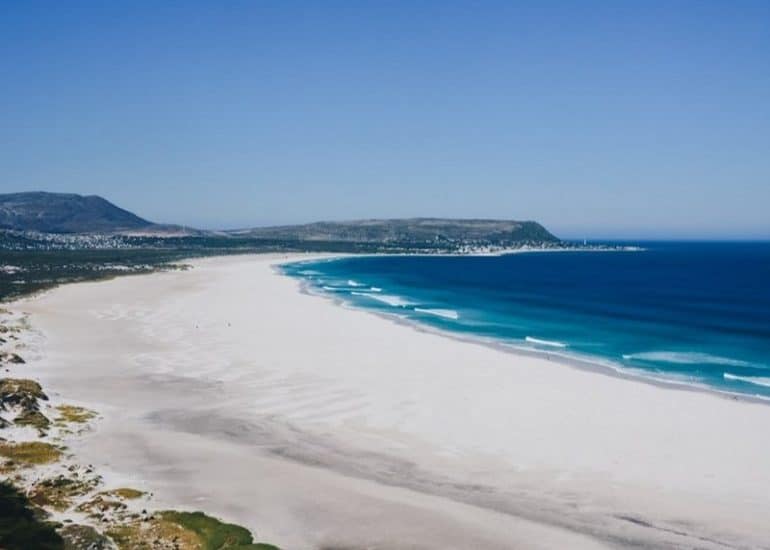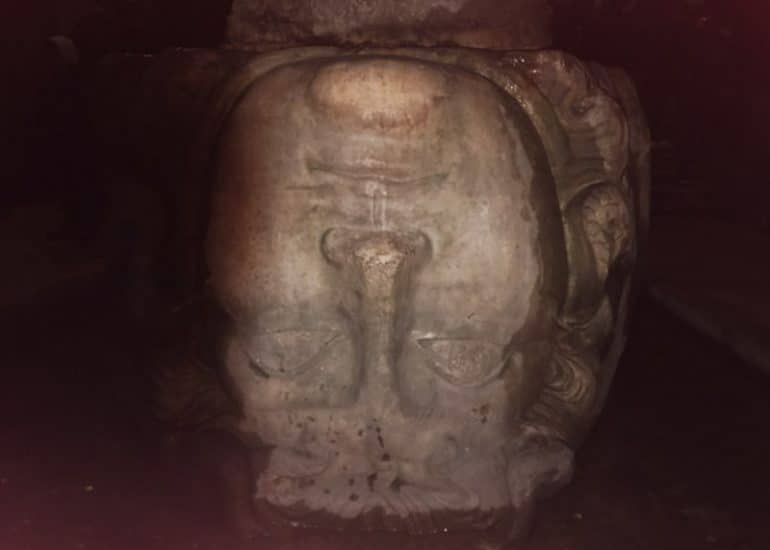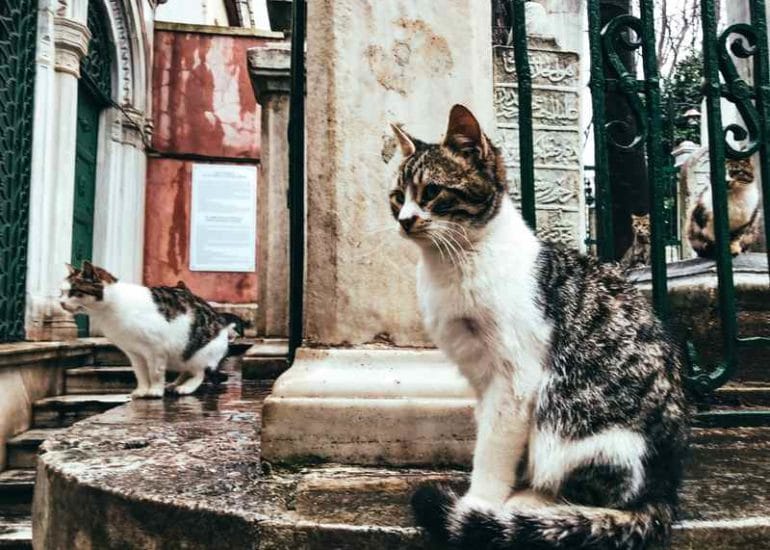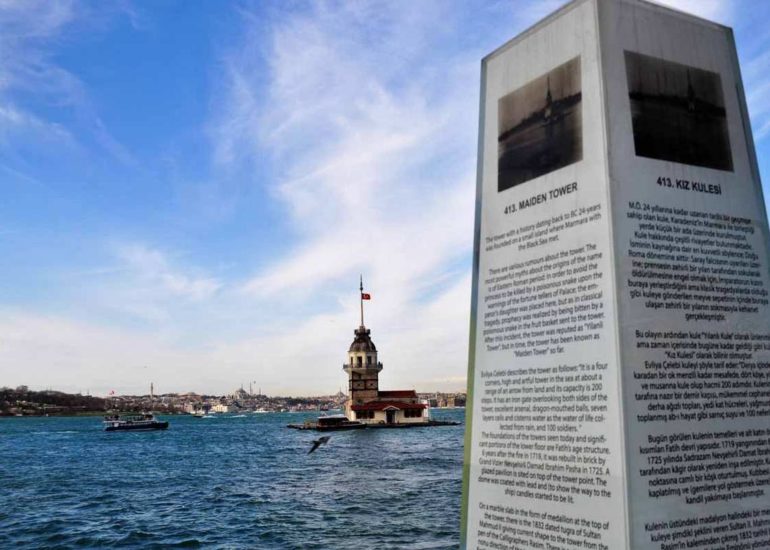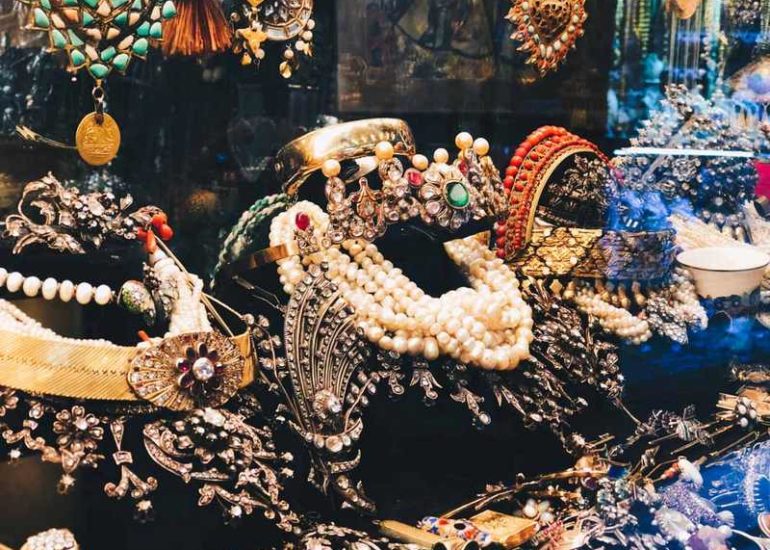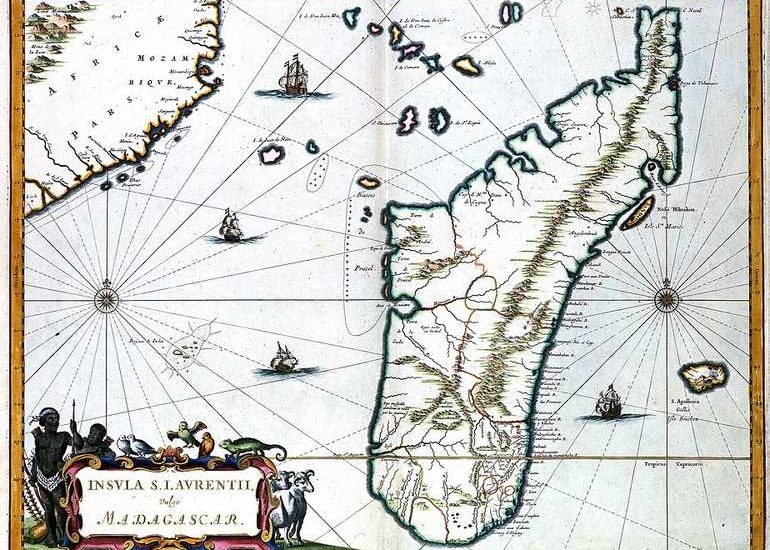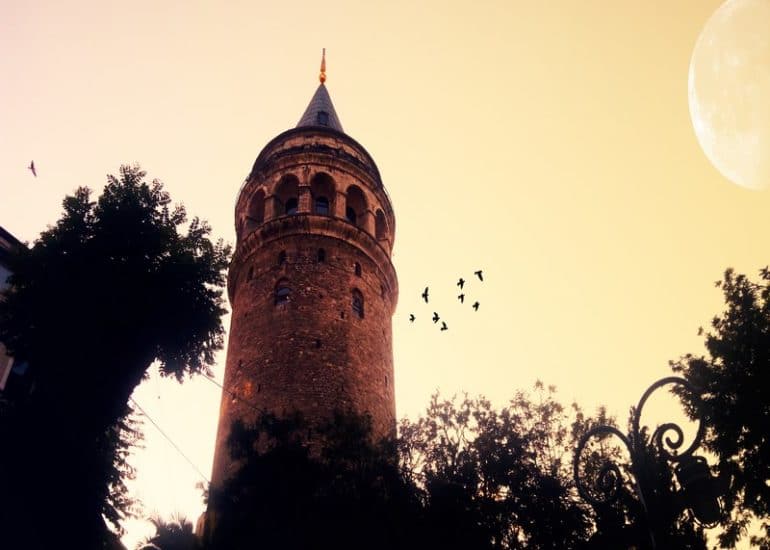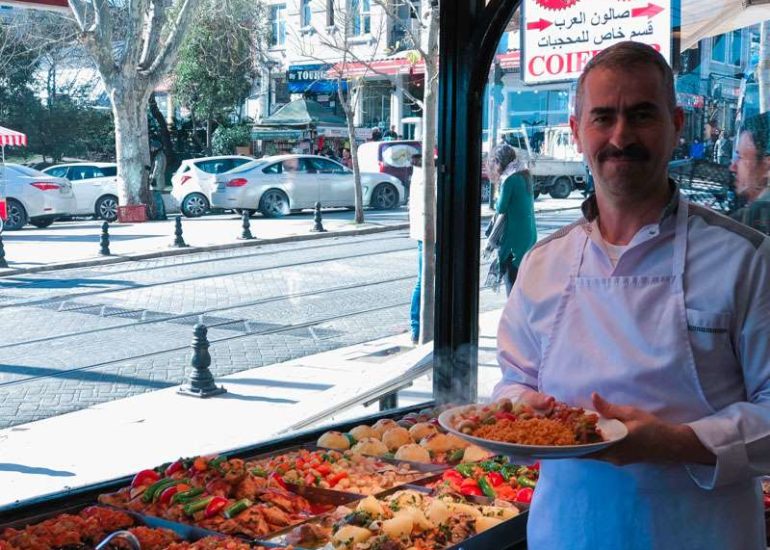Few cities were once considered as the centre of the religious and political world. Istanbul, whose ancient name is still synonymous with wealth, opulence and conspiracies, is one of those that marked the great pages of history. For a long time it was THE city, in the eyes of the rest of the world.
To visit ancient Byzantium it's to dive into the Eastern Christian Empire and its enigmatic and grandiose atmosphere.
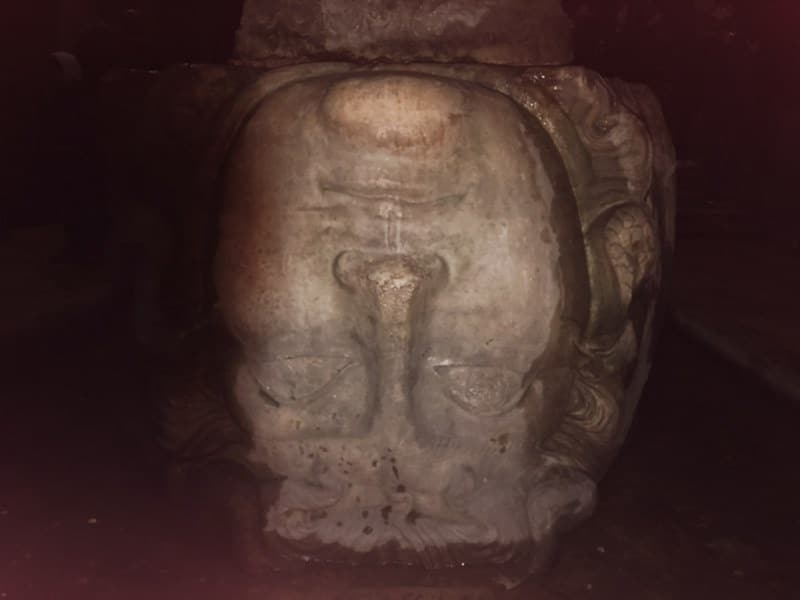
Saint Sophia, a mystical experience
European Shore, Sultanahmet district
The « divine wisdom » was built 1 year before the birth of Islam by the emperor Justinian, who wished to signify to the world the birth of the great
Christian empire of the East by building a monument that the world since Adam (Eve's one) would never have seen and would no longer see. It was the largest place of prayer in the world for nearly 10 centuries.
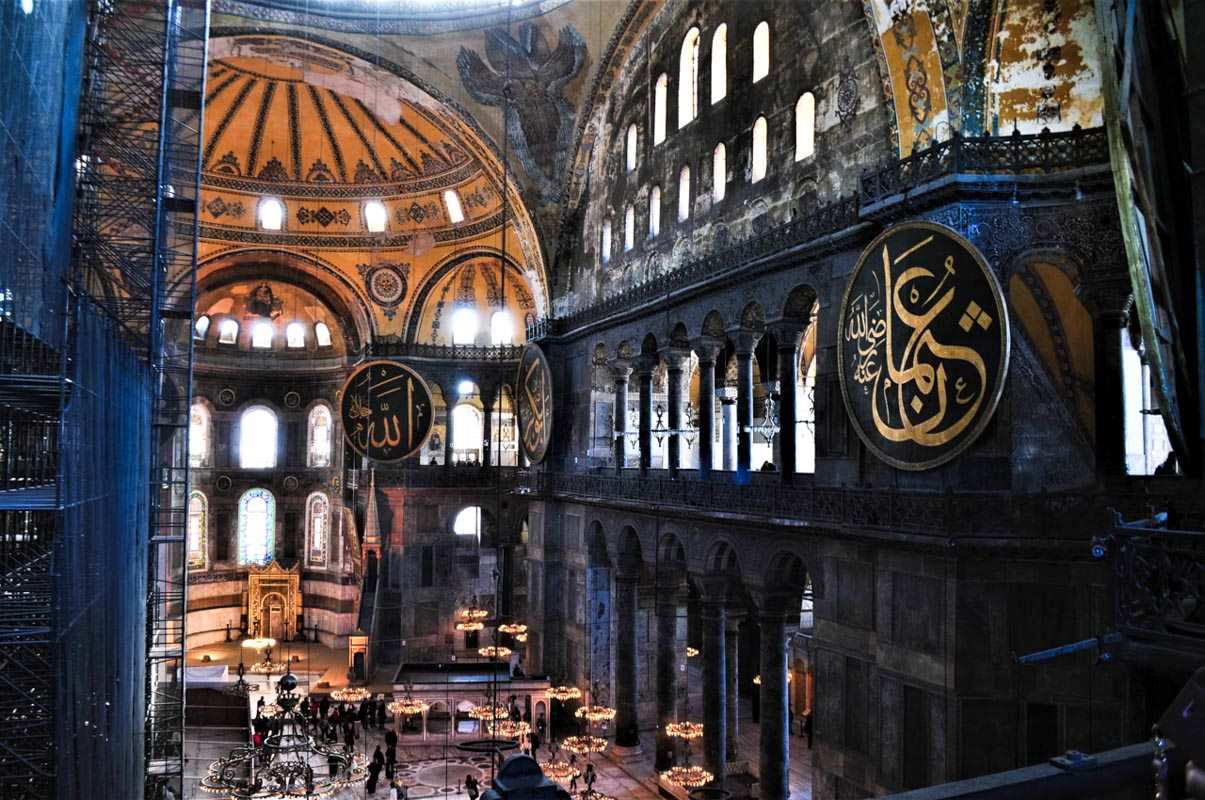
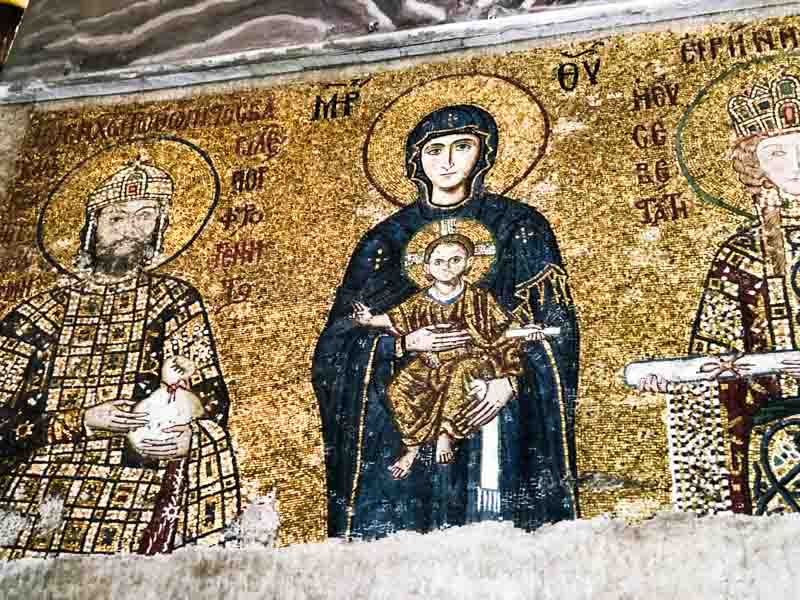
Basilica under the Romans and then mosque when Mehmet II took over the city, Ataturk transformed it into a museum, now regularly restored.
The Islamo-conservative community wants to re-convert it to a mosque, but that’s another story...
The calligraphic verse at the top of the dome, meant to protect it, means “ God is the light of heaven and earth ”.
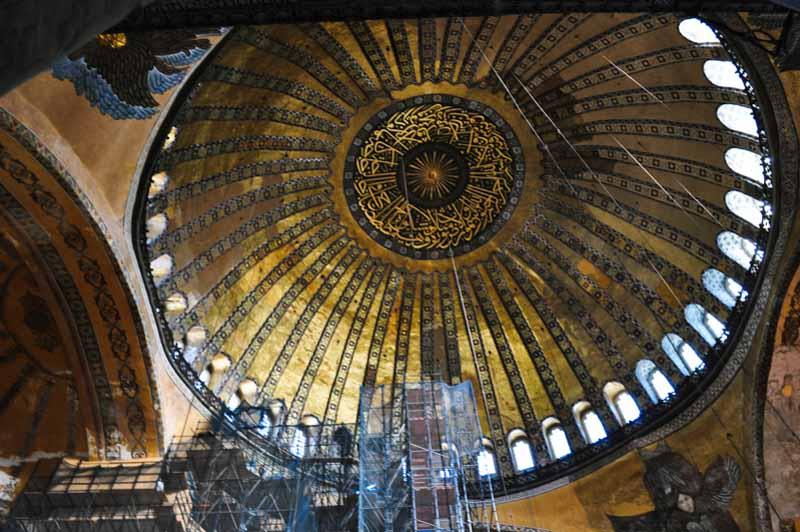
The Dome represented the Gate of Heaven for the Byzantines, but also for the Muslims.
But if you have to look for a miracle in this building that has passed through the centuries, religions and earthquakes, you have to look elsewhere...
The construction of the basilica cost more than an arm... The marbles came from the four corners of the empire, the top of the period, for a masterpiece born of the megalomania of an emperor, of architectural genius, of the wealth of an empire, then later of the pride of the Ottomans.
The new church-center of the Justinian World is erected on the old basilica desired by Constantine, in only 5 years (from 532 to 537), while the fastest construction of our cathedrals is 80 years !
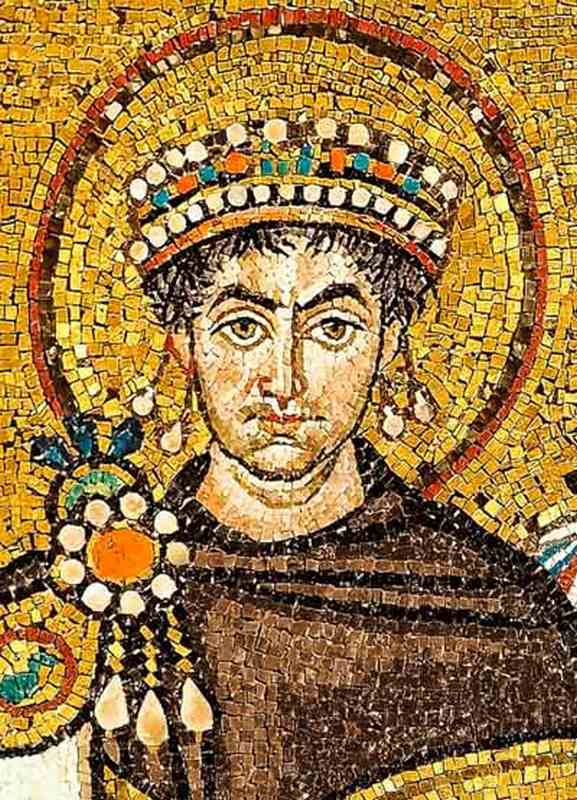
Emperor Justinian, represented in the Basilica of San Vitale, in Ravenna (Italy). Ravenna was the capital of the Western Roman Empire, and today the world capital of mosaic.
The Emperor chose not architects, but a physicist, Isidore de Milet, and a mathematician, Anthemius de Tralles, who showed architectural boldness in holding a building of majestic volumes and unusual dimensions : the dome is 2204 in, the columns are up to 787 in high. Saint Sophia is erected to restore the greatness of religion, to impress, to transcend. It hosts grandiose imperial ceremonies. Constantinople is then the bulwark of Christianity against the rise of Islam.
Later, the "showcase" of the Byzantine Empire is adorned with figurative mosaics including nearly 300,000 m2 of gold mosaics, reflecting the light: that of God, and therefore that of Justinian, his representative on Earth...
Among these, The Deiisis, considered as the absolute masterpiece of the Byzantine mosaic.
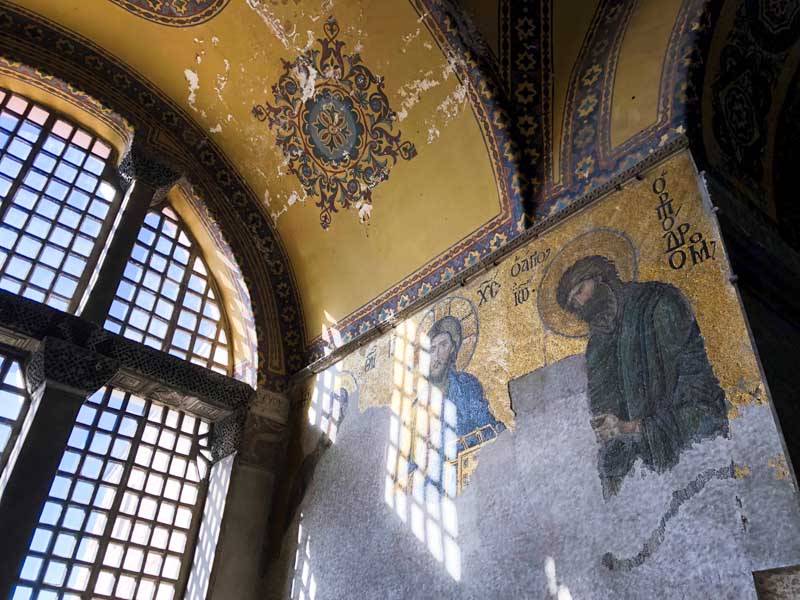
But 20 years after it was built, the dome collapsed in an earthquake. Isidore the physicist’s nephew is working to rebuild it and strengthen the building. Here lies the secret of its longevity, for this reconstruction will result in the dome we know today. Sainte Sophie owes its resistance to its mortar made of lime, water, and brick powder particularly flexible (important qualities against earthquakes) because it consists of volcanic ashes. Current restorations aim to reproduce the exceptional qualities of this mortar.
The collapse of the dome also corresponds to Justinian's one, much disputed in this Christian empire where are raging internal conflicts and « byzantine » quarrels, hence the expression.
When he seized the city, Mehmet, fascinated by this building and impressed by its structure, made it devoted to Islam and added a minbar, a mihrab and then a first minaret. The others, as well as the calligraphy, will be added later.
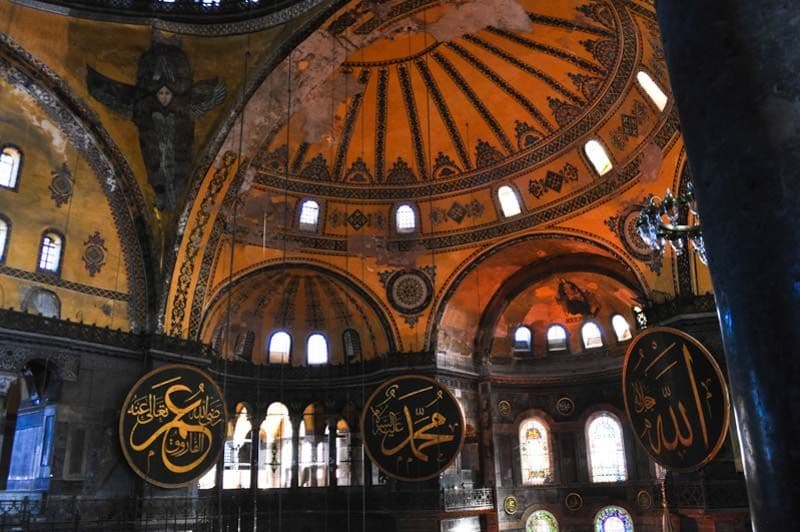
The 7 medallions are each 7.5 m in diameter, but it's difficult to realize because the volumes of the building are very large.
The Ottomans will try to appropriate this model : first with the mosque of Mehmet (Fatih), which was built on the same plan, then with the Suleimaniye Mosque erected by the great Sinan, which thus brought the Ottoman response to the Byzantine architectural genius.
Sinan, an unknown genius and yet comparable to the stature of Michelangelo, strengthens Saint Sophia by adding buttresses.
Thus, Saint Sophia as we contemplate it today is the sum of Byzantine and Ottoman arts. Recovered, consecrated, desecrated, rebuilt, strengthened, but always respected, by men of art and genius.
Its unique character is due to the combination of mosaics – masterpieces of Byzantine art – and Muslim calligraphy, in a cathedral-like volume, topped by a dome of extraordinary dimensions (it was the largest covered building in the world until the Cathedral of Seville was built) where light flooded the interior. It symbolizes all the multicultural richness of the history of Turkey.
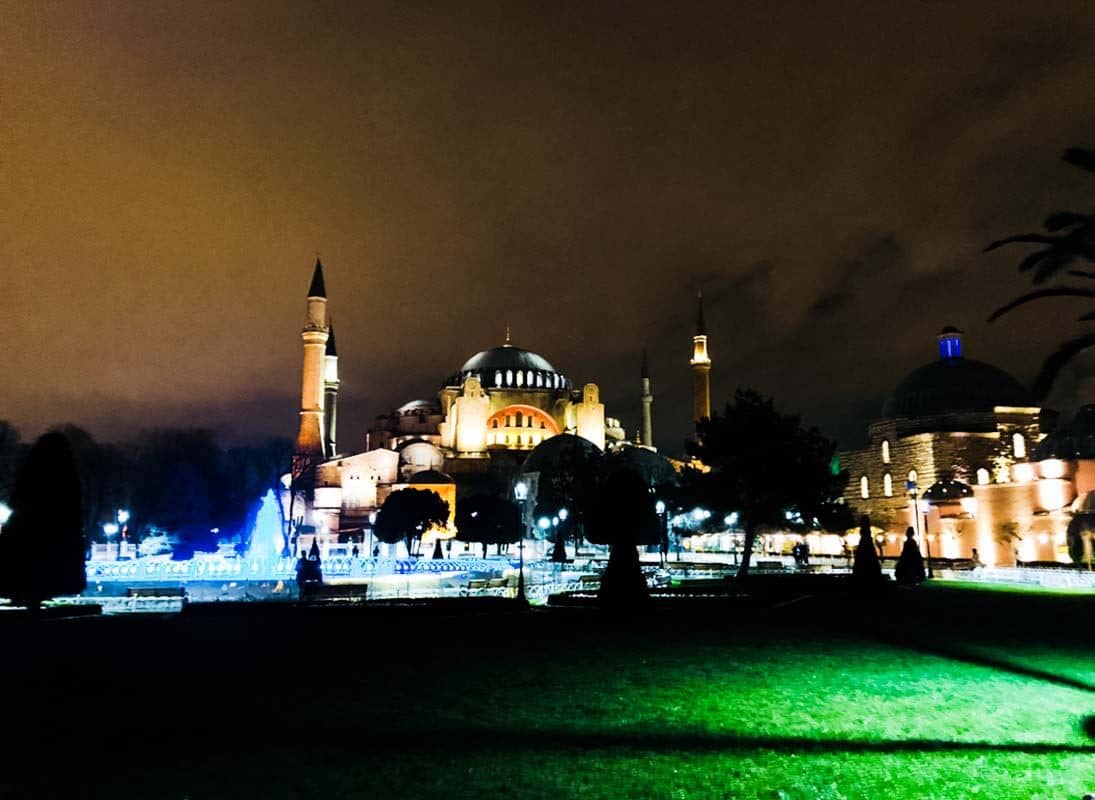
Secrets still buried
In 1847, the basilica was in a pitiful state. Sultan Abdül-Medjid entrusts its restoration to a Swiss, Gaspare Fossati, who discovers mosaics under the plaster, fortunately intact. These were camouflaged by more conservative Muslims. He drew them and had them covered again to avoid their looting.
It wasn't until the arrival of Atatürk, the champion of secularism, that the Byzantine masterpieces were revealed to the public. He made Saint Sophia a museum.
But not all the mosaics drawn have yet been found because scientists don't know their locations. They’re using an electromagnetic scanner to try to detect them, but without knowing where to look, they’re groping— It's very likely that one of them, a Pantocrator Christ, hides at the top of a dome, covered with a calligraphy. It would then have to be destroyed to update it… A work of art under a work of art.
Drawings of the basilica by Gaspare Fossati :
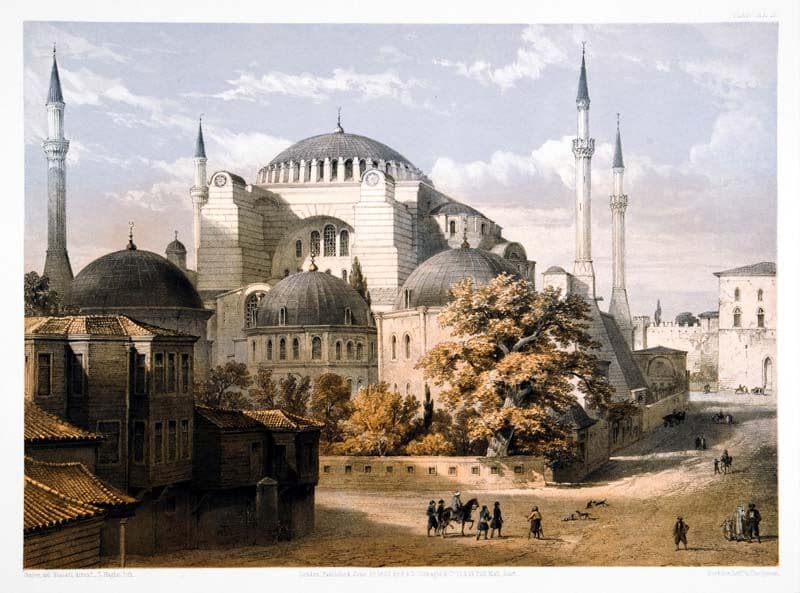
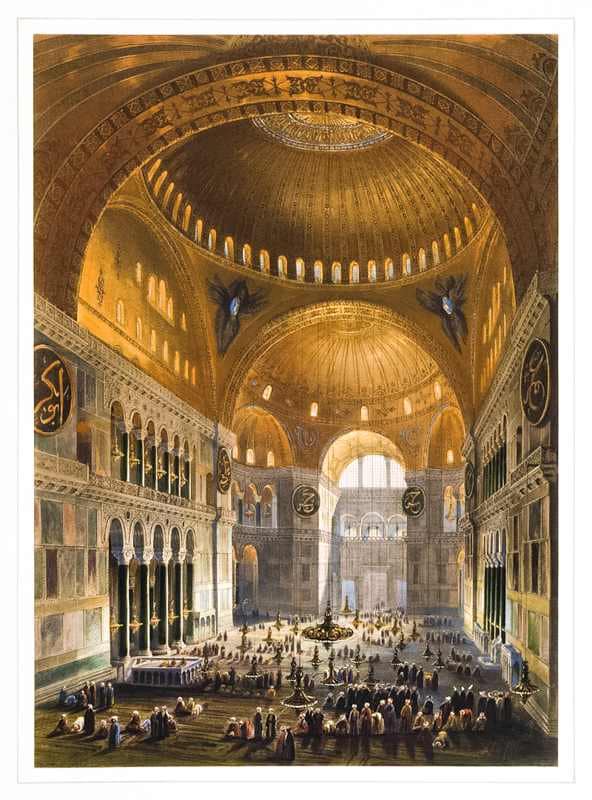
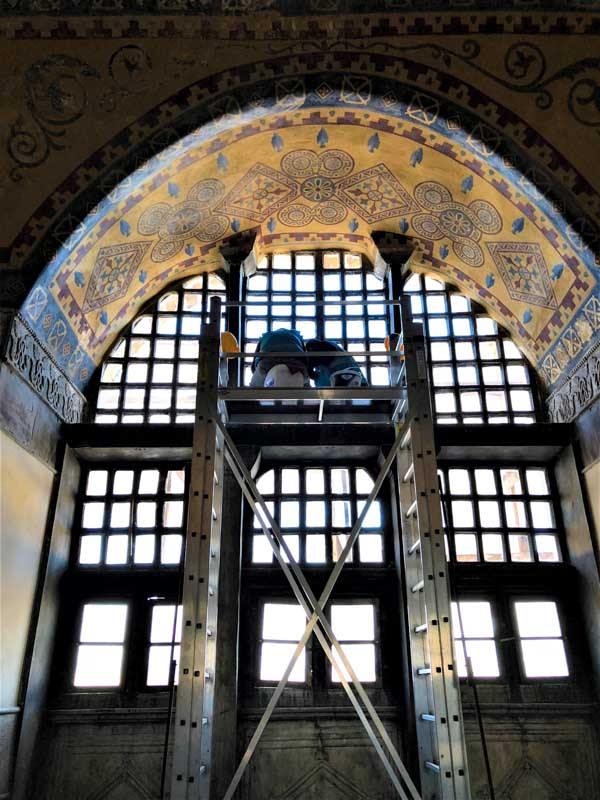
Workers are working on its restoration, which can be risky : unveiling the Christian mosaics « idolaters » covered by Muslims may damage them.
Of course Saint Sophia is also beautiful from the outside. Especially at nightfall when the changing colors of the waters of the fountain play with its lights. Then the complete darkness allows the lights to highlight its curves and openings, which respond to those of the Blue Mosque. The two sultanes face each other…
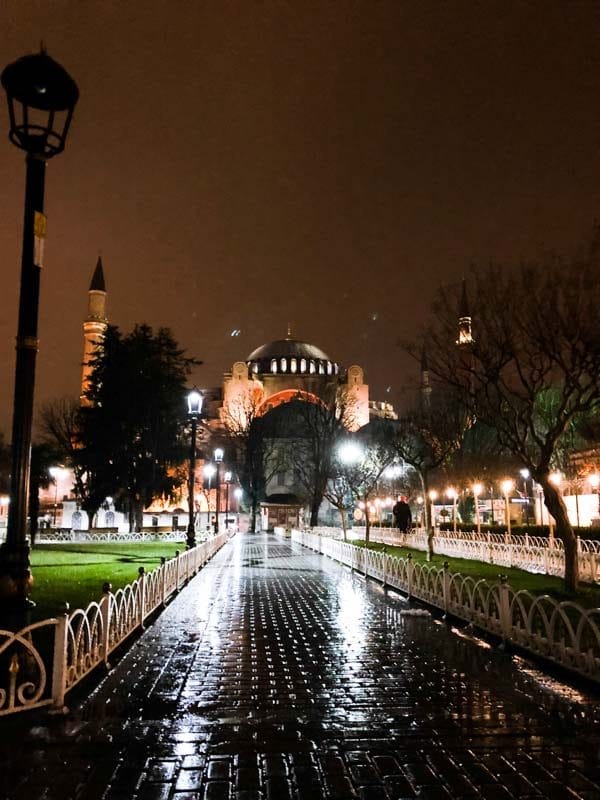
The best time to go. In the morning at the opening if you don't wanna wait for hours , between 1pm and 2pm during lunch (less groups), or 2 hours before closing.
Budget. Included in the Museum Pass card. Or 8.50€ (40 TL)
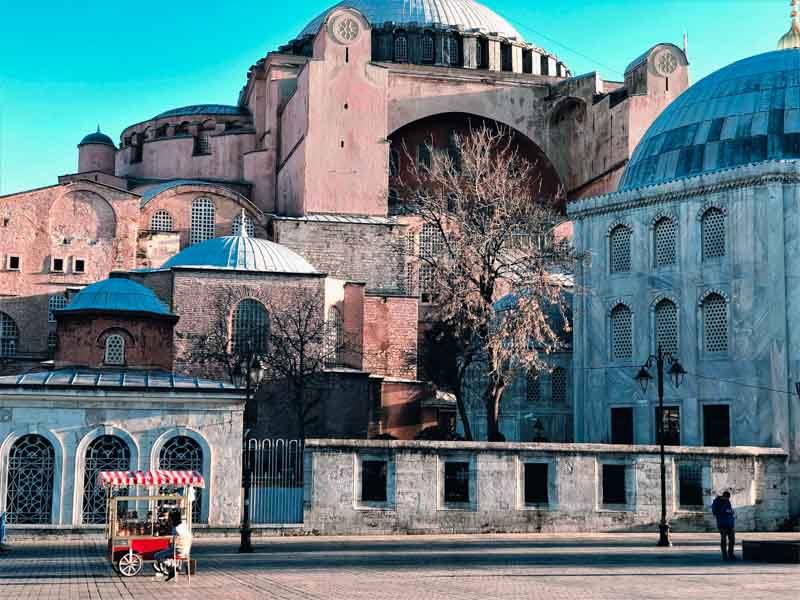
A morning in January. There is hardly anyone in front of Saint Sophia.
#Ayasofya#HagíaSophía
In the meantime, Gli is walking in Saint Sophia...
If Saint Sophia is a museum, it still has a tenant... Gli took up residence in the Basilica Mosque 14 years ago and is walking there, enjoying the caresses of tourists. The game is to find him !
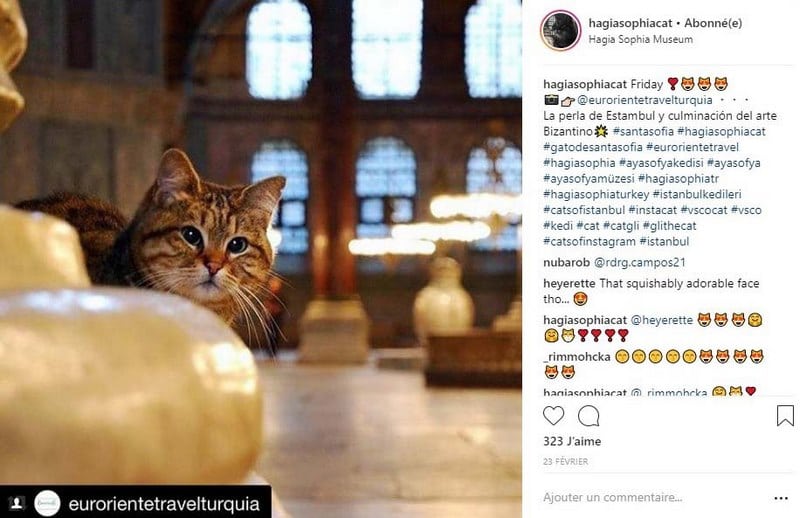
Healthy, tiger fur, green eyes, slightly strabic look that gives it a vaguely oriental look.
He even has his Facebook page and his Instagram !
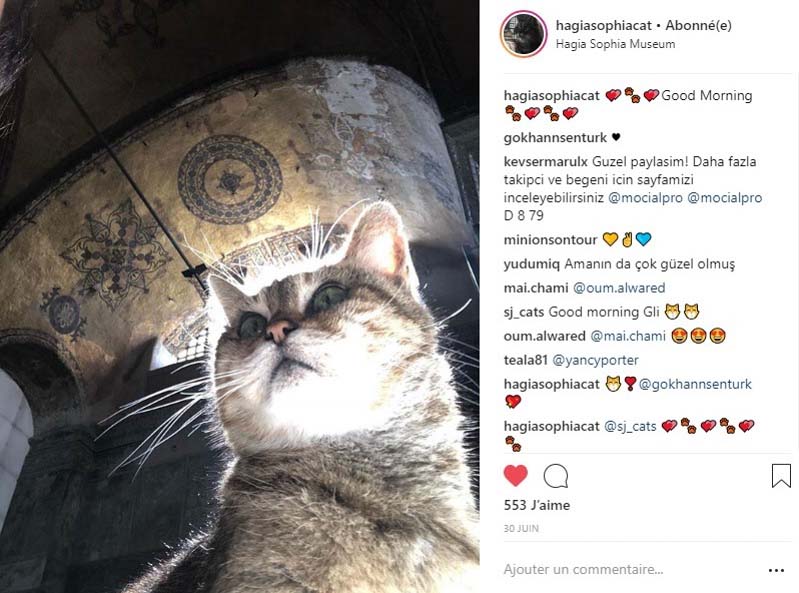
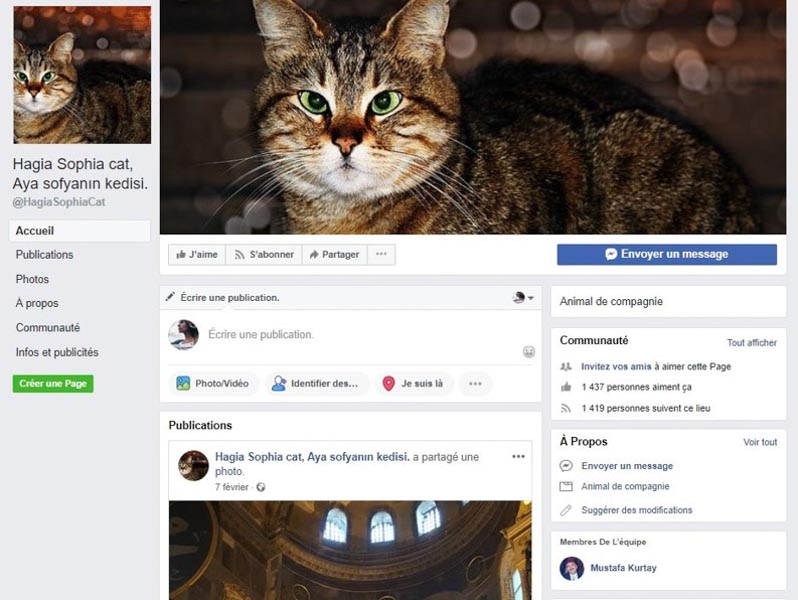
The basilica cistern in the bowels of Byzantium
European Shore, Sultanahmet district
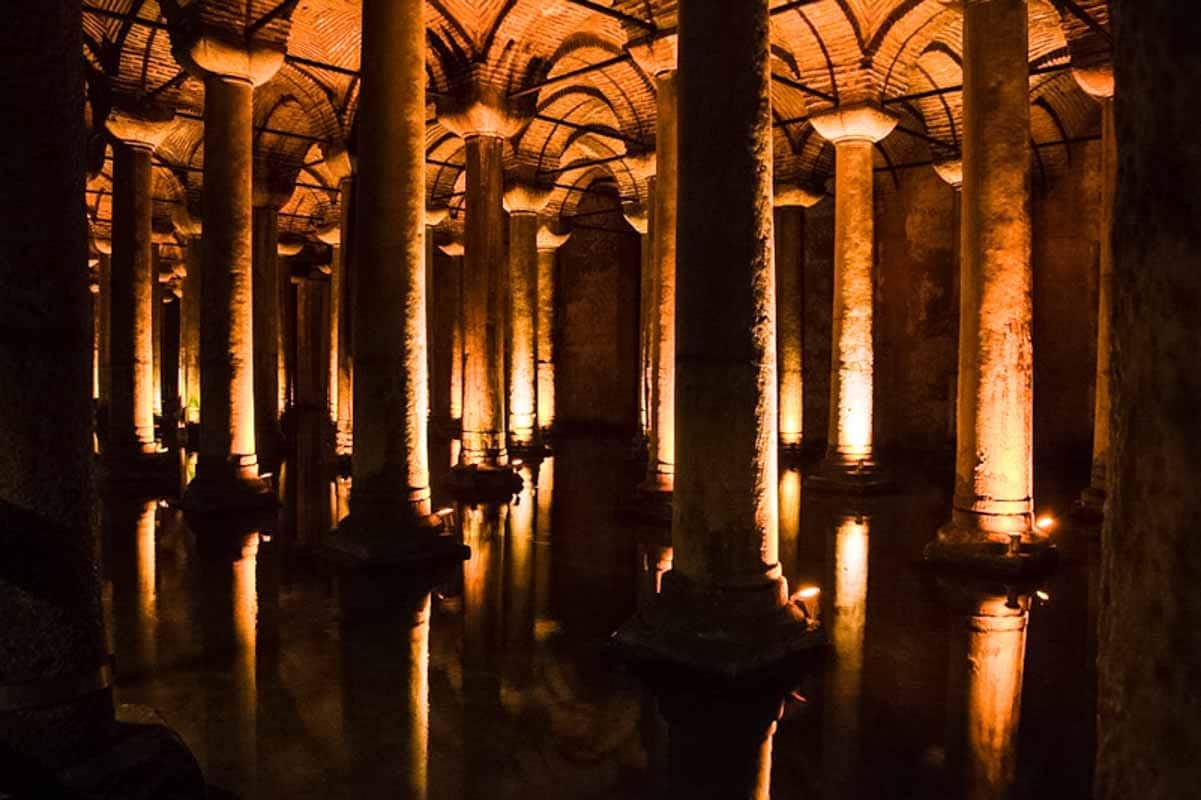
Another amazing place to be.
Unfortunately, there are few traces of the Byzantine past of the city. The palaces were destroyed by time and by men. Apart from the mosaics of Saint Sophia, there are still two witnesses of the Byzantine era : the Church of Saint Sauveur in Chora, and a cistern buried underground, aka Yerebatan Sarnıcı, miraculously intact. Dating back to the year 542, the Emperor Justinian greatly improved it to supply water to the imperial palace (now extinct) in summer, and to serve as a reserve in case of siege. The cistern – not the only one in the city, but the most impressive – was discovered by chance by the Ottomans, who used it to supply water to the palace of Sultan Topkapi.
If we visit it today through platforms, we have to imagine this huge space filled with 78,000 m3 of water.
During World War I it was visited by boat, like James Bond in From Russia with love. Classy.
Why the basilica cistern ?
Because this huge reserve was located under the courtyard of a basilica. Moreover, it must be recognized that its architecture supported by 336 columns gives it the allure.
The visit, short, ends with two sculpted heads, one upside down and the other upside down, of a mythological character: Medusa.
Coming from a Roman site, its heads were probably used to ward off evil spirits. They were not discovered until 1980.

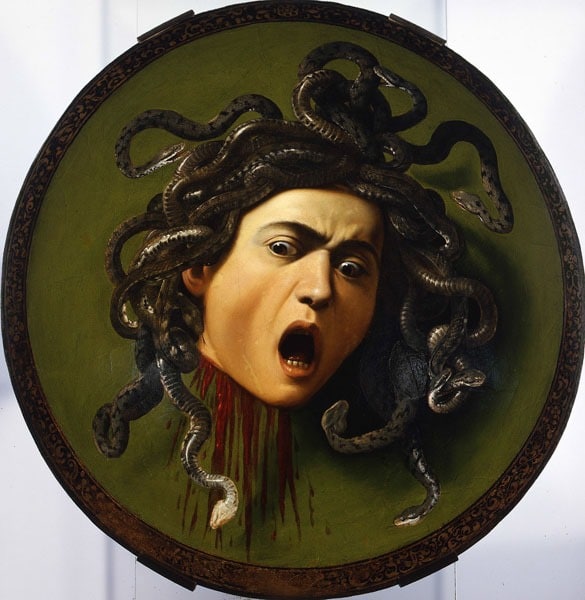
Medusa by Caravaggio. Its hair is intertwined with snakes and its eyes have the power to petrify any mortal who looks at them. Its representation will long be used as a shield against the evil eye.
It's not surprising that this setting and its aura of mystery inspired cinema (From Russia with love, Skyfall, The Water Diviner), literature (Inferno by Dan Brown) but also the world of video game (Assassins Creed : Revelations).
During my studies in Tourism, one of my teachers told me about this very special place. I was very intrigued by her description. Indeed, despite all my travels, I never had the chance to explore a place like this. It's impossible not to think of the péplums, the Roman Empire or the Greek mythology in this mysterious alcove, illuminated by lights placed at the feet of the columns.
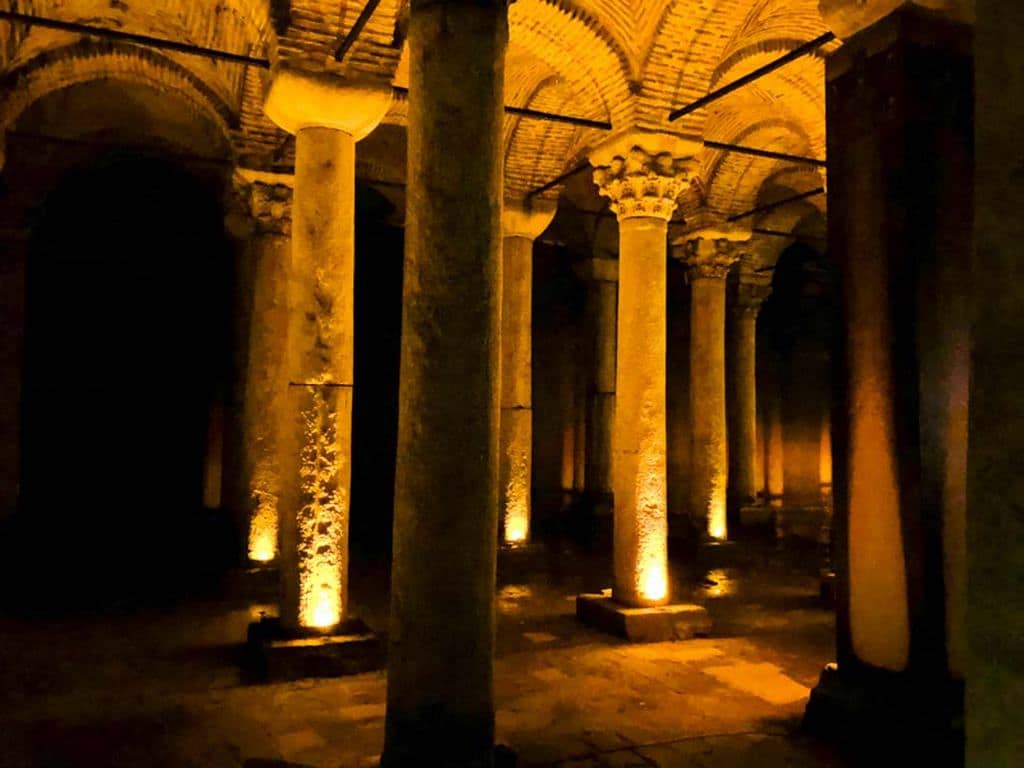
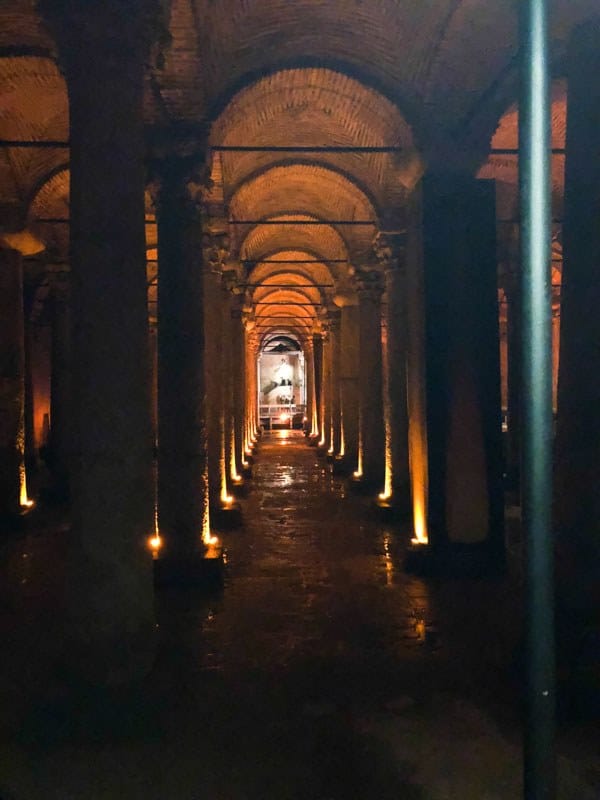
There is also a Byzantine cistern under the Topkapi palace, but unfortunately closed to the public.
Best time to go. Visit it just after Saint Sophia, cause it's located next door. Highly touristic place, there will be people even in low season.
Budget. 4.30€ (20TL). Inside, a costume stand offers photos in Ottoman outfits. It’s kitsch, not for free, but fun, especially for families for whom Dad can pose as the sultan of the family.
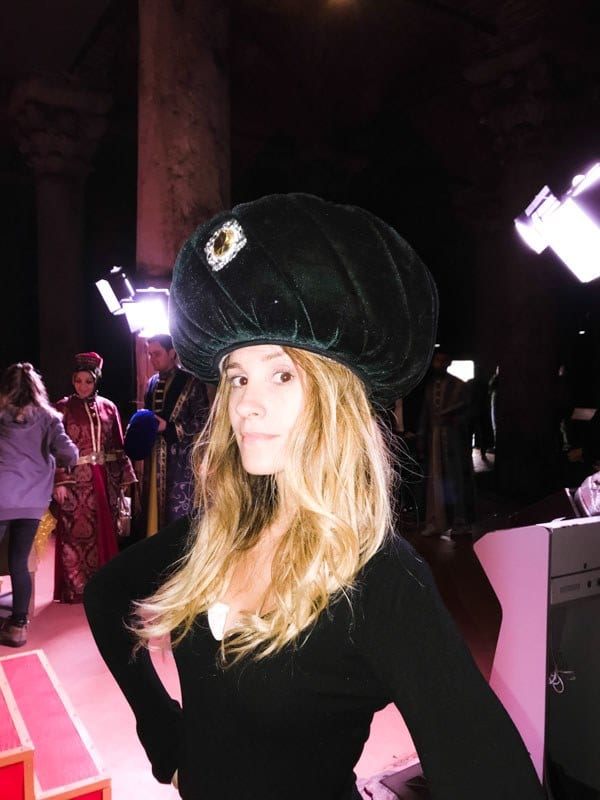
Heads will roll!
#YerebatanSarnıcı
Saint-Sauveur-in-Chora church, the remains of Byzantium
EUROPEAN SHORE, EDIRNEKAPI DISTRICT
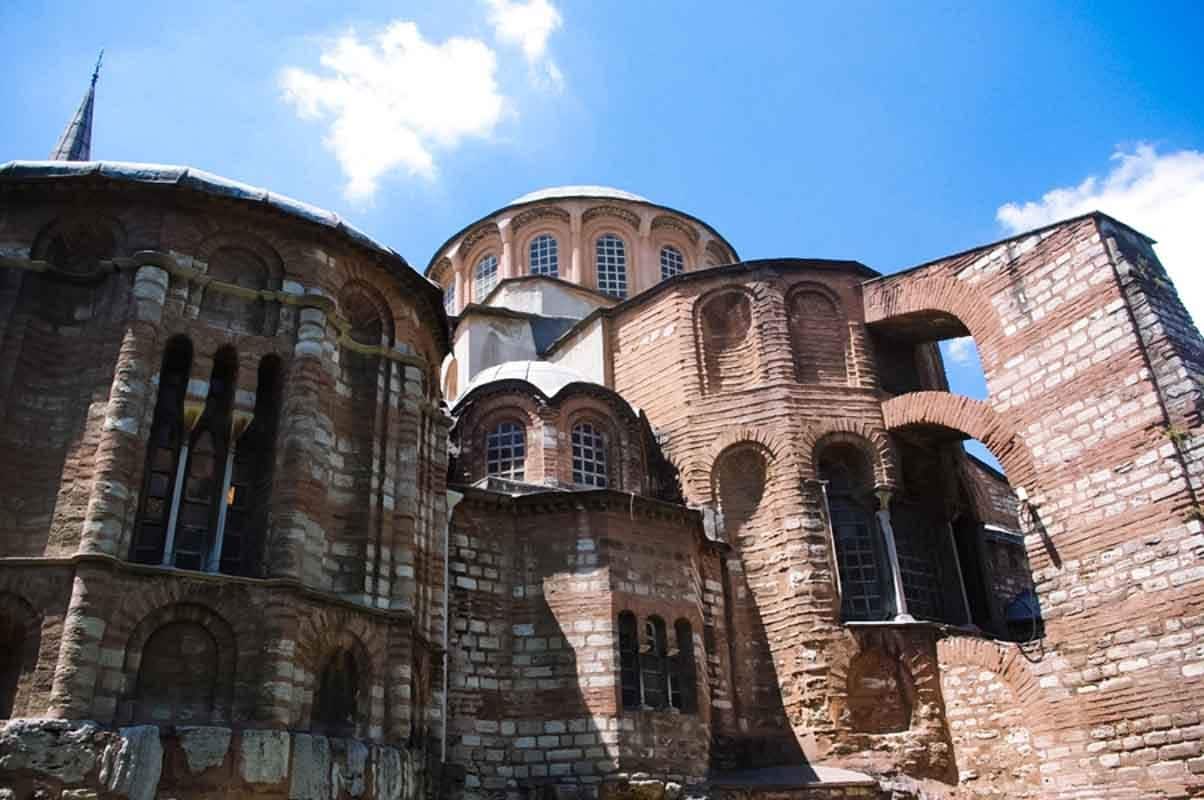
At the mention of Byzantium, the first image that comes to mind is a profusion of riches. Then comes the face of Christ Pantocrator, and with him the mosaics encircled with gold characteristic of the Byzantine churches.
After Saint Sophia, the church of Saint-Sauveur-in-Chora is the most important Byzantine monument in Istanbul. If the immensity of the first impresses, the human size of the second allows more intimacy, closeness with its masterpieces : the most beautiful mosaics of the city, no more and no less.
Chora means “ out of town, in the country ” in ancient Greek. The church was then located outside the walls of the city, much less extensive than it is today. Built in the 5th century, what remains of it today only dates from the 11th century, and still, thanks to the Ottomans (16th century), who preserved the mosaics by covering them with lime (being forbidden to represent man in Islam) when they could have simply destroyed them. In fact, other churches will remain what they are (for the use of Christians still living in Constantinople after its fall), but Saint-Sauveur-in-Chora will be transformed into a mosque. The angels carved in the stone will have less luck, their faces will be hammered with a chisel.
So it was quite a surprise in 1948, when the church was transformed into a museum, to discover them, under the plaster, almost intact.
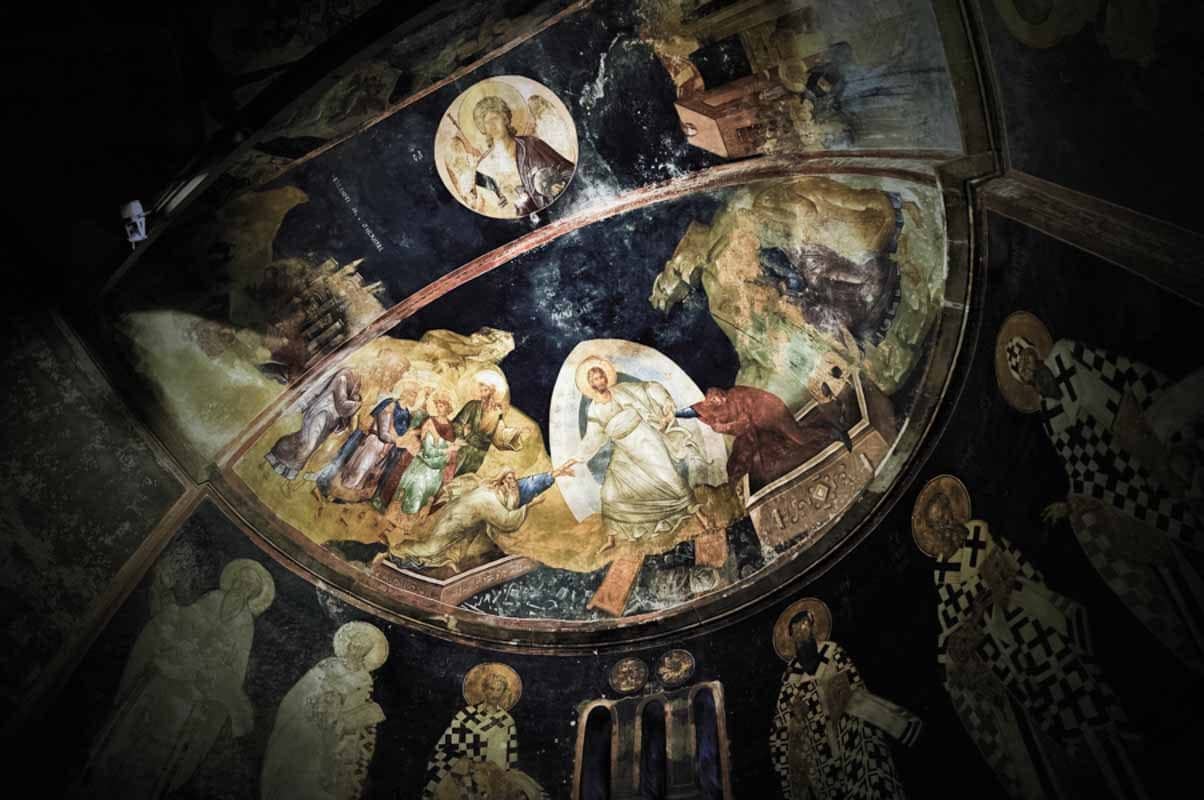
The scene of the Anastasis (the Resurrection) depicts Jesus, the devil at his feet, holding hands with Adam and Eve to get them out of their tombs.
Christ Pantocrator and “ war on icons ”
If we are more used to see the suffering Christ on the cross or as a wise little man in the manger, in the Byzantine art, Orthodox, he's more like a superhero... Christ pantocrator, from the Greek pan, « all » and kratos « power », is therefore all powerful, adult, bearded, and has long hair. He's enlivened by a light that surrounds his head and he holds the Book of Sacred Scripture.
In the time of Byzantium, icons are revered in churches and at home. They are true lucky charms to which the population attributes miraculous powers : it's claimed that they weren't painted with the hand of man. This went too far for the Byzantine emperors and many were then destroyed during « iconoclastic crises » in the 8th and 9th centuries : in the face of invasions, epidemics and other disasters that we know today natural, « iconoclastic » Christians of the Empire question the reasons for the wrath of God and the wisdom of the cult of images. For them, it's impossible to enclose the divine in a drawing, so they oppose this idolatry and destroy the holy images, after many Byzantine quarrels (hence the expression) and theological debates.
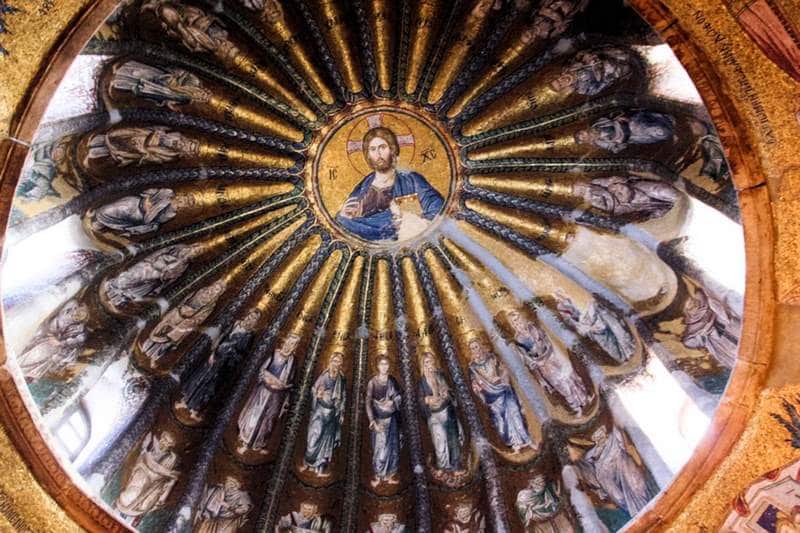
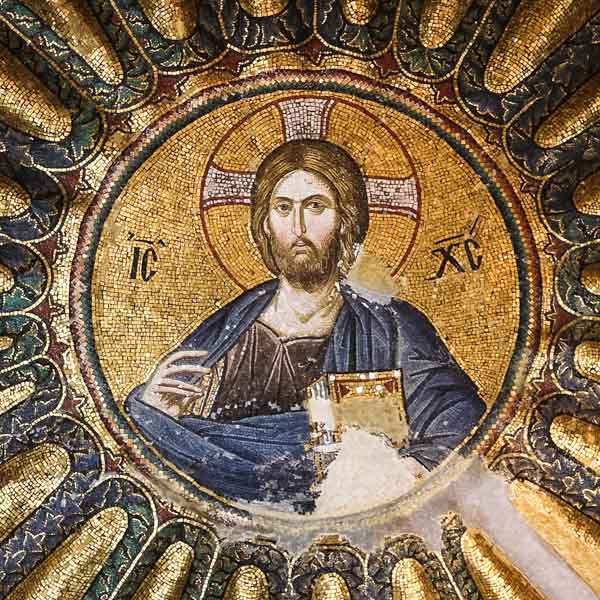
Constantinople fell into the hands of the Muslim Ottomans, and Greek Orthodox artists fled to Italy, where they popularized Christ Pantocrator, later known in the West as Salvator Mundi, aka the “ Saviour of the World ”.
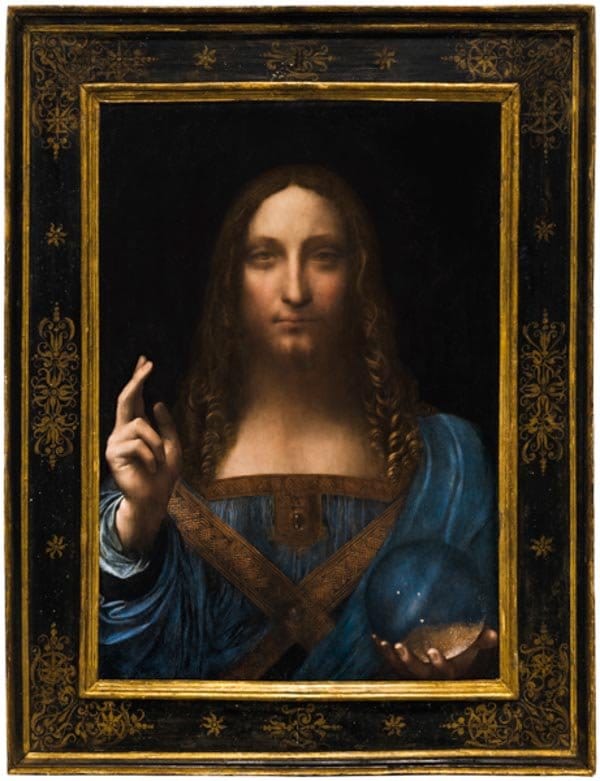
Leonardo da Vinci’s Salvator Mundi is the most expensive painting in the world : acquired for 382 million euros (!!!) in 2017 by an Arab crown prince.
Apart from Saint Sophia and Saint Sauveur in Chora, it's possible to observe some Christ Pantocrator in Sicily (in Cefalu, Monreale and Palermo), Russia, Greece, Jerusalem, but the oldest representation is that of Saint Catherine's monastery in Egypt, produced in Constantinople. But given the current security situation in Sinai, it is impossible to visit it.
Best time to go. At lunch time or at the end of the afternoon (around 3/3.30pm during summer, the access is closed at 1pm). The church is open every day except Wednesday, from 9am to 7pm in summer and until 5pm from October 1st to April 15th.
Access. Tram stop Aksaray where metro stop Ulubalti then taxi.
Budget. Included in the Istanbul Museum Pass, otherwise entrance at 6.30 € (30 LR)
